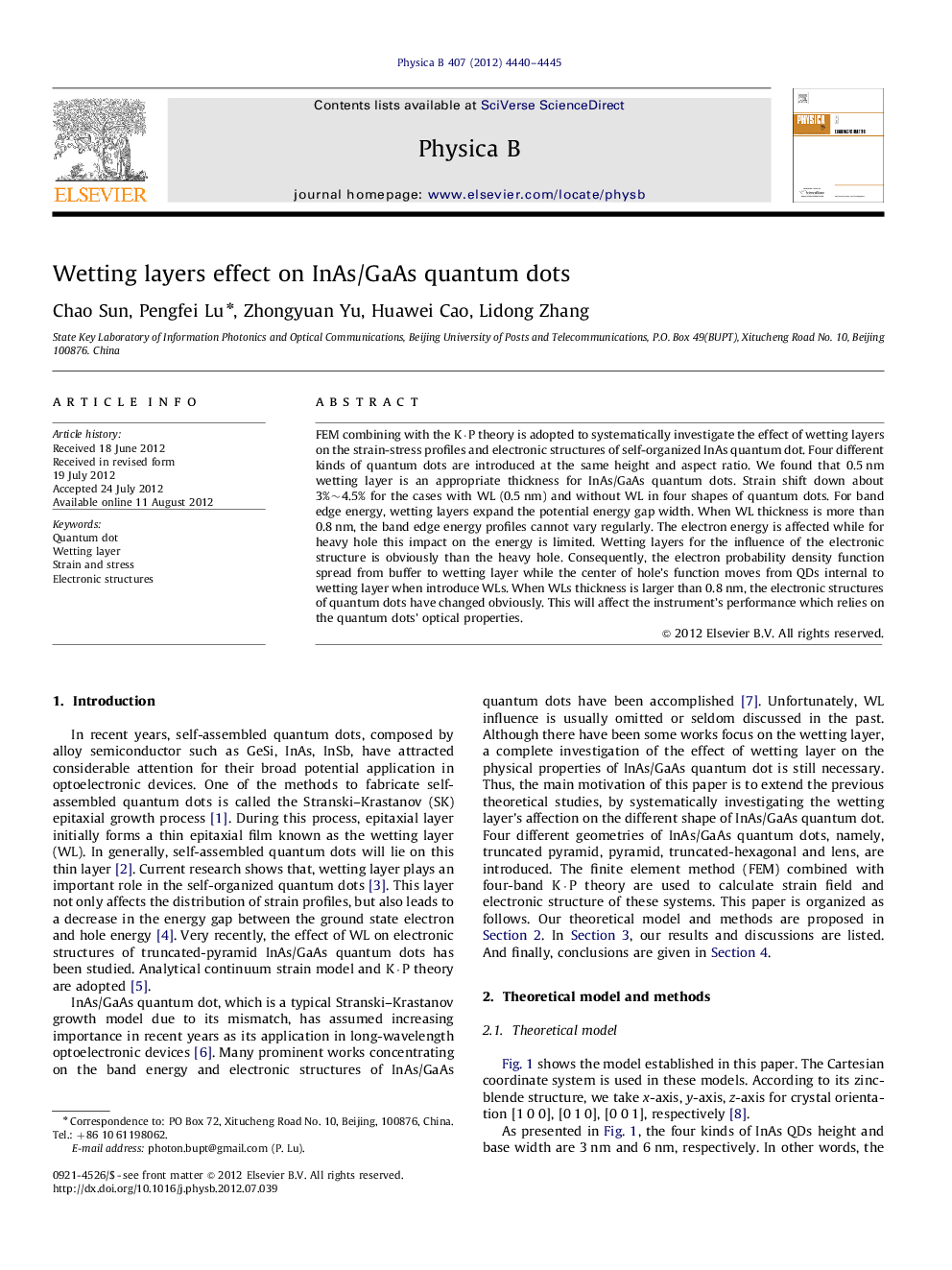| Article ID | Journal | Published Year | Pages | File Type |
|---|---|---|---|---|
| 1810314 | Physica B: Condensed Matter | 2012 | 6 Pages |
FEM combining with the K·P theory is adopted to systematically investigate the effect of wetting layers on the strain-stress profiles and electronic structures of self-organized InAs quantum dot. Four different kinds of quantum dots are introduced at the same height and aspect ratio. We found that 0.5 nm wetting layer is an appropriate thickness for InAs/GaAs quantum dots. Strain shift down about 3%∼4.5% for the cases with WL (0.5 nm) and without WL in four shapes of quantum dots. For band edge energy, wetting layers expand the potential energy gap width. When WL thickness is more than 0.8 nm, the band edge energy profiles cannot vary regularly. The electron energy is affected while for heavy hole this impact on the energy is limited. Wetting layers for the influence of the electronic structure is obviously than the heavy hole. Consequently, the electron probability density function spread from buffer to wetting layer while the center of hole's function moves from QDs internal to wetting layer when introduce WLs. When WLs thickness is larger than 0.8 nm, the electronic structures of quantum dots have changed obviously. This will affect the instrument's performance which relies on the quantum dots' optical properties.
